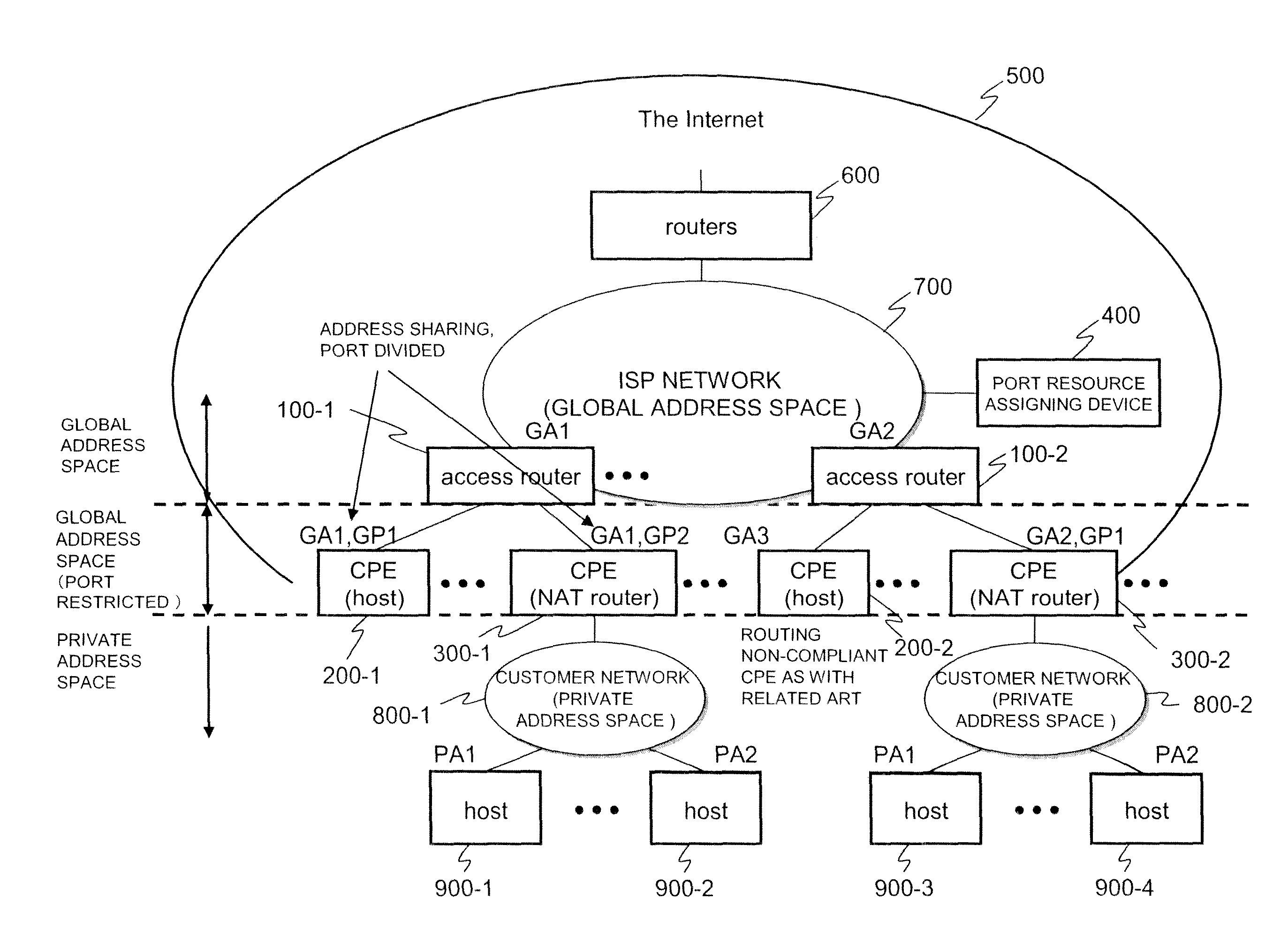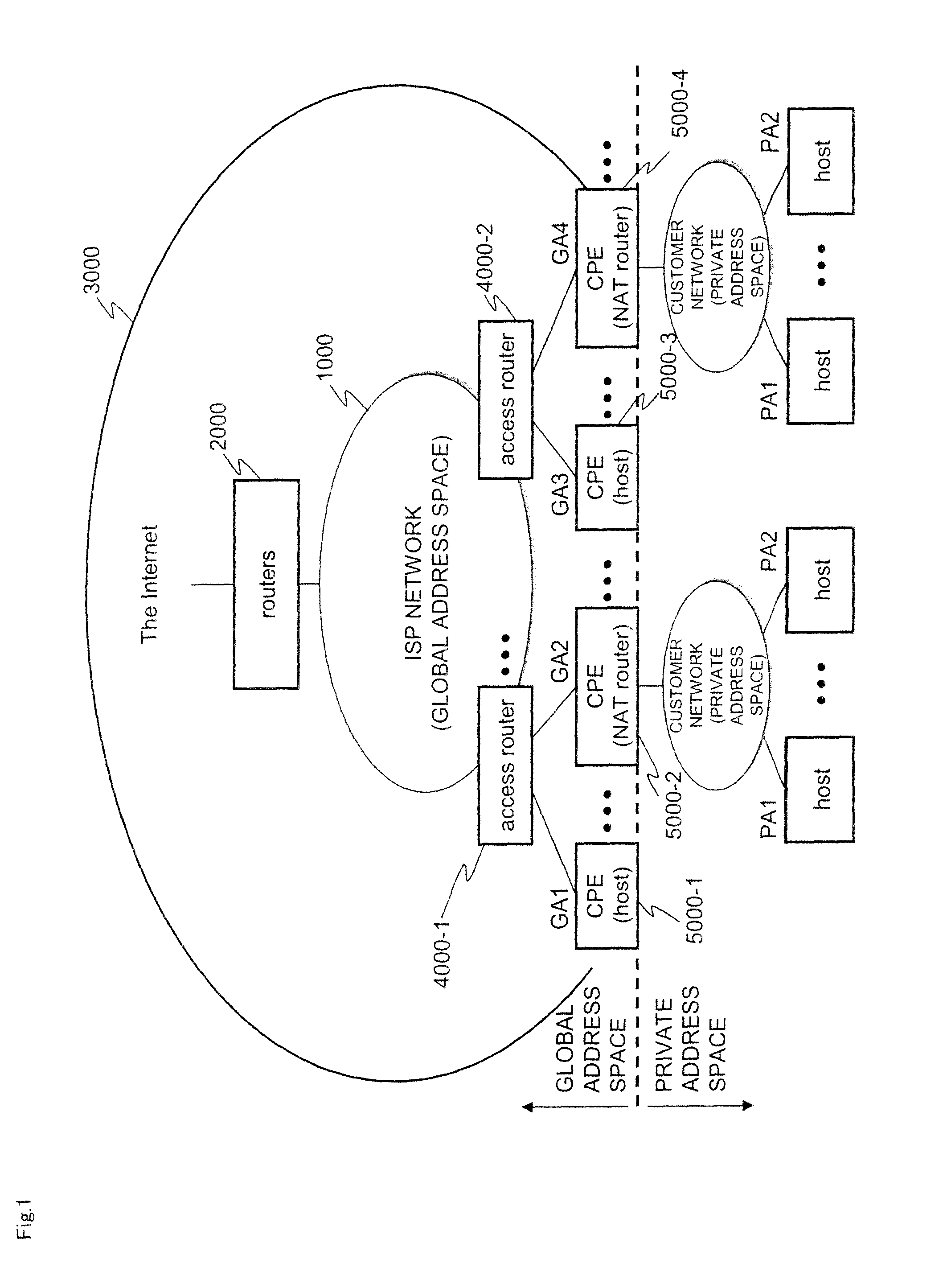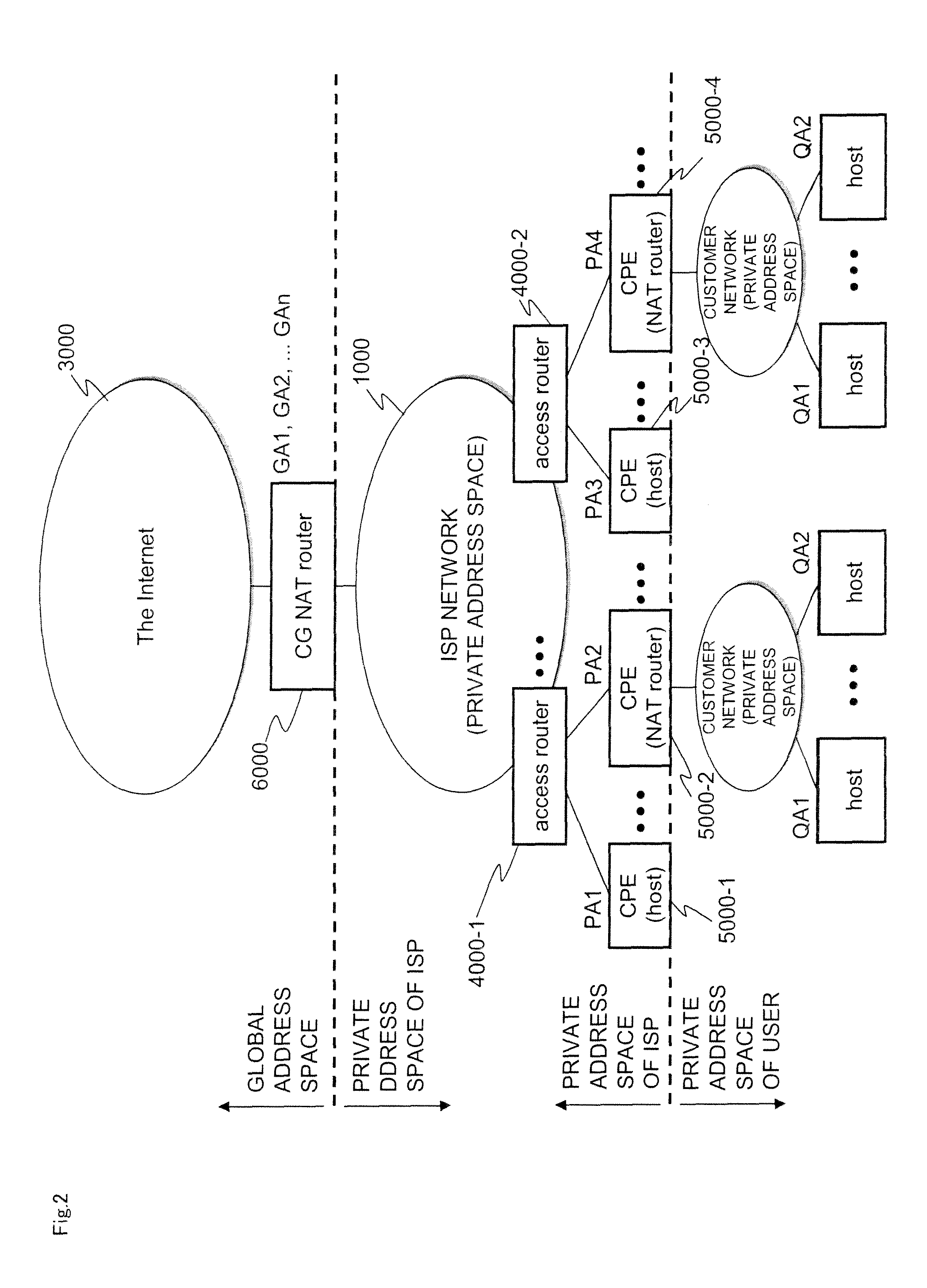Address-sharing system
a technology of address sharing and address sharing, applied in the field of address sharing system, can solve the problems of increasing the cost of processing packet transfer in comparison with routers, preventing bidirectional access from being secured between devices, and introducing napt devices, etc., and achieve the effect of efficient use of port numbers
- Summary
- Abstract
- Description
- Claims
- Application Information
AI Technical Summary
Benefits of technology
Problems solved by technology
Method used
Image
Examples
first exemplary embodiment
[0086]FIG. 5 is a block diagram showing an example of internal configurations of access router 100-1, CPE 200-1 and CPE 300-1 shown in FIG. 4 in a first exemplary embodiment. Access router 100-1 shown in FIG. 4 and access router 100-2 have the same configuration and function; CPE 200-1 and CPE 200-2 have the same configuration and function; CPE 300-1 and CPE 300-2 have the same configuration and function.
[0087]Access router 100-1 shown in FIG. 4 includes routing section 110, port base routing section 120 and unassigned port communication blocker 130, as shown in FIG. 5. Access router 100-1 is connected to port resource assigning device 400.
[0088]Routing section 110 has a routing function as with a typical router.
[0089]Unassigned port communication blocker 130 blocks traffic that uses an inappropriate port number.
[0090]FIG. 6 is a block diagram showing an example of an internal configuration of port base routing section 120 shown in FIG. 5.
[0091]Port base routing section 120 shown in...
second exemplary embodiment
A Case where CPE Uses Assignment Port in Sessions
[0220]In the first exemplary embodiment, the CPE uses one port for one session. However, in a case where the opposite party of communication is different, a single terminal point on the local side may be used for a different connection destination. This configuration allows the port number to be used more efficiently.
[0221]The description will be made on points different from those of the first exemplary embodiment. In a second exemplary embodiment, only the CPE, or NAPT, has a configuration different from that of the first exemplary embodiment.
[0222]FIG. 19 is a block diagram showing an example of an internal configuration of address converter 330-2 in the second exemplary embodiment. Address converter 330-2 is provided in the CPE, or NAPT, as with address converter 330 in the first exemplary embodiment.
[0223]Among configurational elements of address converter 330-2 shown in FIG. 19, the configuration of address conversion table 331-...
example
[0251]The exemplary embodiments of the present invention can be specifically realized using following devices.
[0252]That is any one of pieces of CPE 200-1, 200-2, 300-1 and 300-2, access routers 100-1 and 100-2, port resource assigning device 400 includes a central processing unit (CPU), volatile memory, communication interface, and nonvolatile memory or hard disk. The above operation can be realized by a program stored in the nonvolatile memory or the hard disk, or a program to be loaded after activation using communication interface.
[0253]Each of access routers 100-1 and 100-2 can be realized not only as a single computer but also as a so-called chassis type device, which includes a line card mounted with a communication interface, a CPU card performing control of the entire device and path calculation, a switch fabric module exchanging packets between the cards at high speed, and a service card mounted with another supplementary function. In this case, the routing section, the po...
PUM
 Login to View More
Login to View More Abstract
Description
Claims
Application Information
 Login to View More
Login to View More - R&D
- Intellectual Property
- Life Sciences
- Materials
- Tech Scout
- Unparalleled Data Quality
- Higher Quality Content
- 60% Fewer Hallucinations
Browse by: Latest US Patents, China's latest patents, Technical Efficacy Thesaurus, Application Domain, Technology Topic, Popular Technical Reports.
© 2025 PatSnap. All rights reserved.Legal|Privacy policy|Modern Slavery Act Transparency Statement|Sitemap|About US| Contact US: help@patsnap.com



